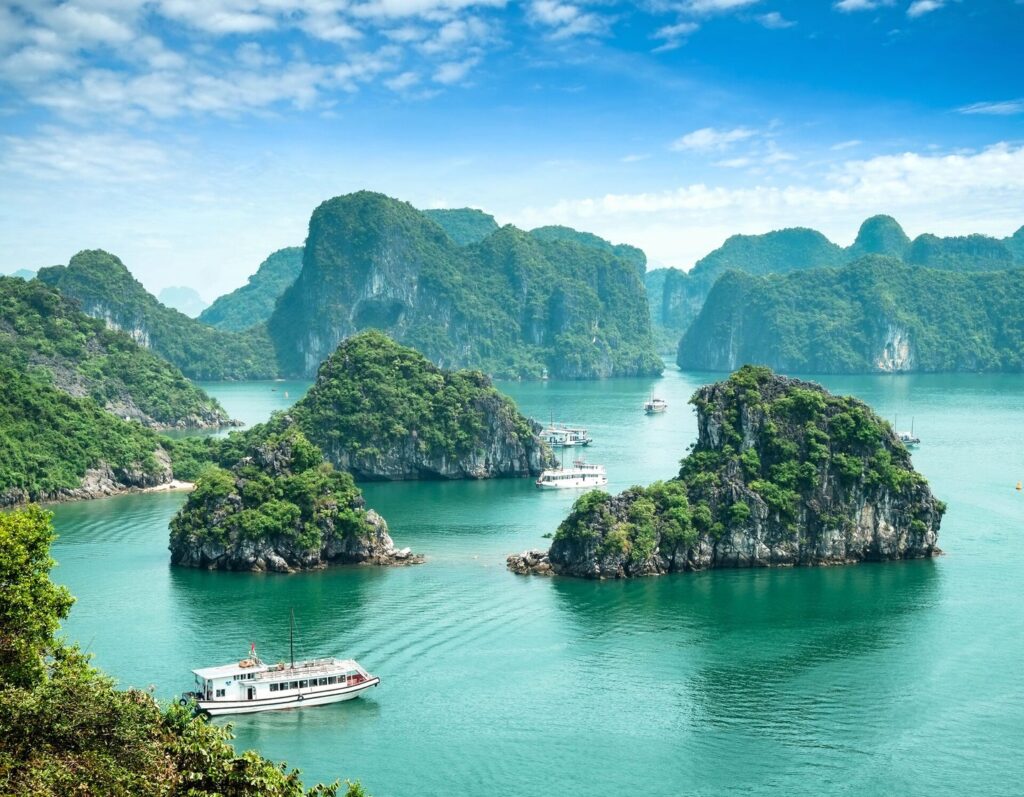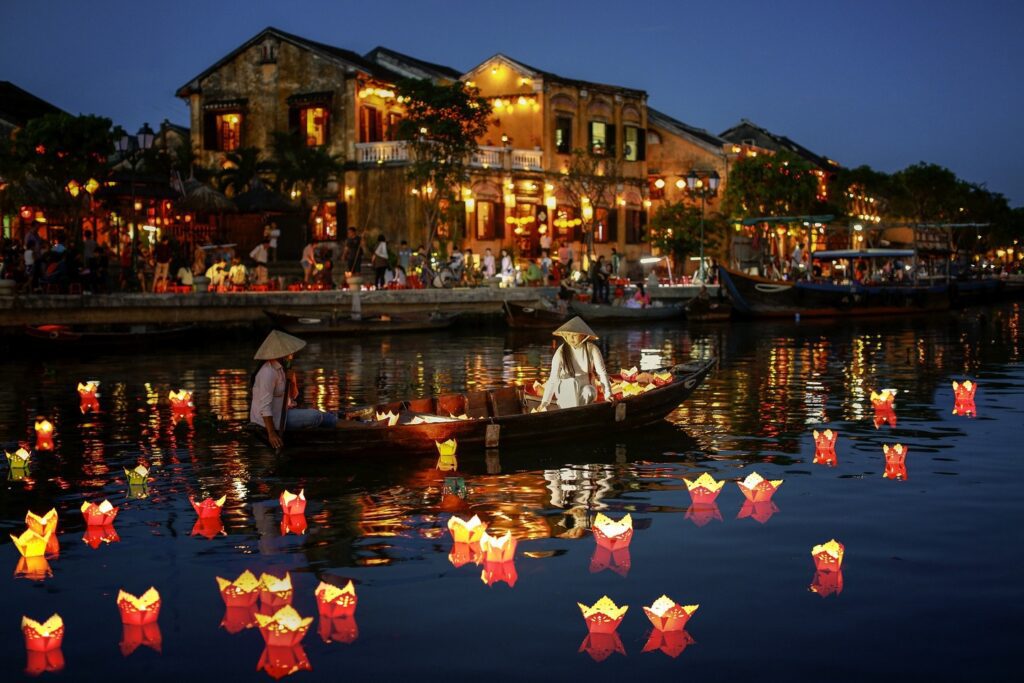Recently updated on May 23rd, 2024 at 08:57 am
A trip to Vietnam conjures up images of sailing the towering karst landscape of Ha Long Bay at sunset, or trekking through verdant rice paddies as light dances off the shimmering terraces. Vietnam is a captivating country filled with fantastically diverse landscapes, friendly locals, and fresh and vibrant cuisine. From the north to the south, this long skinny country – more than 1,000 miles long – also experiences varying weather patterns from temperate to tropical, so when is the best time to visit Vietnam?
As you’d expect, this changes from region to region, so when to visit Vietnam depends on what you’d like to see. The calendar year has times to avoid – like the Lunar New Year, and the wet season or monsoon season. Let’s dive into when is the best time to visit Vietnam, and when to avoid the Southeast Asian country.
Book your Vietnam trip between now and the end of June and save up to $2,800 per couple with our September on Sale deals.


RELATED BLOG: What to pack and how to dress in Vietnam
Best & worst time to visit Vietnam
Most of Vietnam experiences two distinct seasons – the rainy or wet season and the dry season. Luckily, in Vietnam the extremes are not too strong so it is still safe to visit year-round – though we suspect you’d enjoy your vacation more if it wasn’t raining!
The rainy season usually falls between May and September, with the dry season lasting between October and April – but this varies slightly from north to south, which we’ll dive into below.
The best time to visit Vietnam is during the dry season when sunny days make it a joy to explore – just remember to pack your sunscreen and wide-brim hat. That means the worst time to visit Vietnam is during the wet season – when there is more extreme tropical weather and monsoon winds – but you should also consider avoiding some holidays.


Tết or “Lunar New Year” is the biggest celebration on the Vietnamese calendar, but similar to Thanksgiving, many Vietnamese will return to their home village to visit relatives, friends and neighbors, exchange New Year greetings, and give lucky money to children and elderly people. This means many businesses, restaurants, and tour guides may be unavailable. Tết dates change each year, but fall either in January or February.
While Tết may cause some travel chaos within Vietnam, there are other festivals, such as the Mid-Autumn Festival (Tet Trung Thu) in September or October, which celebrates the harvest, or the historic Huế Festival in April. Both show off come the unique culture and color of Vietnam.
BOOK A TRIP: Highlights of Vietnam
Best time to Vietnam by region
Northern Vietnam (Hanoi, Sapa, Ha Long Bay)


Northern Vietnam is perhaps the country’s most dramatic region with the misty mountains of Sapa, the awe-inspiring Halong Bay, and the buzzing capital of Hanoi. Here you’ll find the seasons feel more distinctive, and some areas – like the mountainous north – actually have four seasons rather than the wet/dry pattern.
During the dry season, from November to April, you can expect pleasant temperatures in Northern Vietnam. In the mountain areas north of Hanoi you should pack a jacket for cool nights and expect good temperatures for trekking. In Hanoi city, pack for moderate temperatures.
If you don’t mind the heat and humidity, the wet season (May to October) does offers some magic. The best time to visit Sapa, a rural area in the far north, is in September and October when the famous rice terraces are at their best. During these months, just before harvest, the rice starts to turn golden, adding even more texture to the terraces.
VISIT VIETNAM: Vietnam and the Temples of Angkor
Central Vietnam (Hoi An, Da Nang, Nha Trang)


Beach lovers will adore the dry season (February to August) in Central Vietnam, where coastal cities and towns including Hoi An, Da Nang, and Nha Trang attract sun worshippers and fly-and-flop style vacationers. During these months you can expect hot, sunny days that are best spent by the water.
Of course, these are some of the hottest months – so if you want to combine beach time with historic sights, aim for the earlier months (February-May) when the heat is more manageable.
The coast of Central Vietnam experiences heavy rains and even typhoons during the wet season (September to January). November is a particularly rainy month,but the worst of it subsides by February. As you’d expect, the crowds dwindle significantly – which could be nice in the popular ancient port town of Hoi An.
RELATED BLOG: Vietnamese street food: 11 dishes you have to try
Southern Vietnam (Ho Chi Minh City, Mekong Delta)


In Southern Vietnam the moped madness of the capital, Ho Chi Minh City, at rush hour contrasts with the serene beauty of the Mekong Delta. The dry season falls from November to April, when the days are sunny and warm – ideal for exploring! This is the best time to visit Southern Vietnam and during these months you can expect clear skies and comfortably warm days. Though, a word of warning, from March to May it can get as hot as 104°F (40°C).
When the wet season hits (May to October) expect hot and humid days with afternoon showers. The rain is brief – almost like the clouds let out a sigh of relief after a humid day – and it makes the landscape vibrant and green. It’s one of the more beautiful times to visit the Mekong Delta, with the rain filling the rivers and making the vegetation grow wild. There can be flooding during this time, but the rain is usually in short bursts and rarely affects travel plans.
TAKE A TRIP: Vietnam and Cambodia Uncovered
RELATED BLOG: How to cross the road in Vietnam like a total pro
The best time to visit Vietnam? Possibly the shoulder seasons of April and May, or September to November when you’ll find fewer crowds, decent weather, and better prices. What do you think? Leave us a comment….